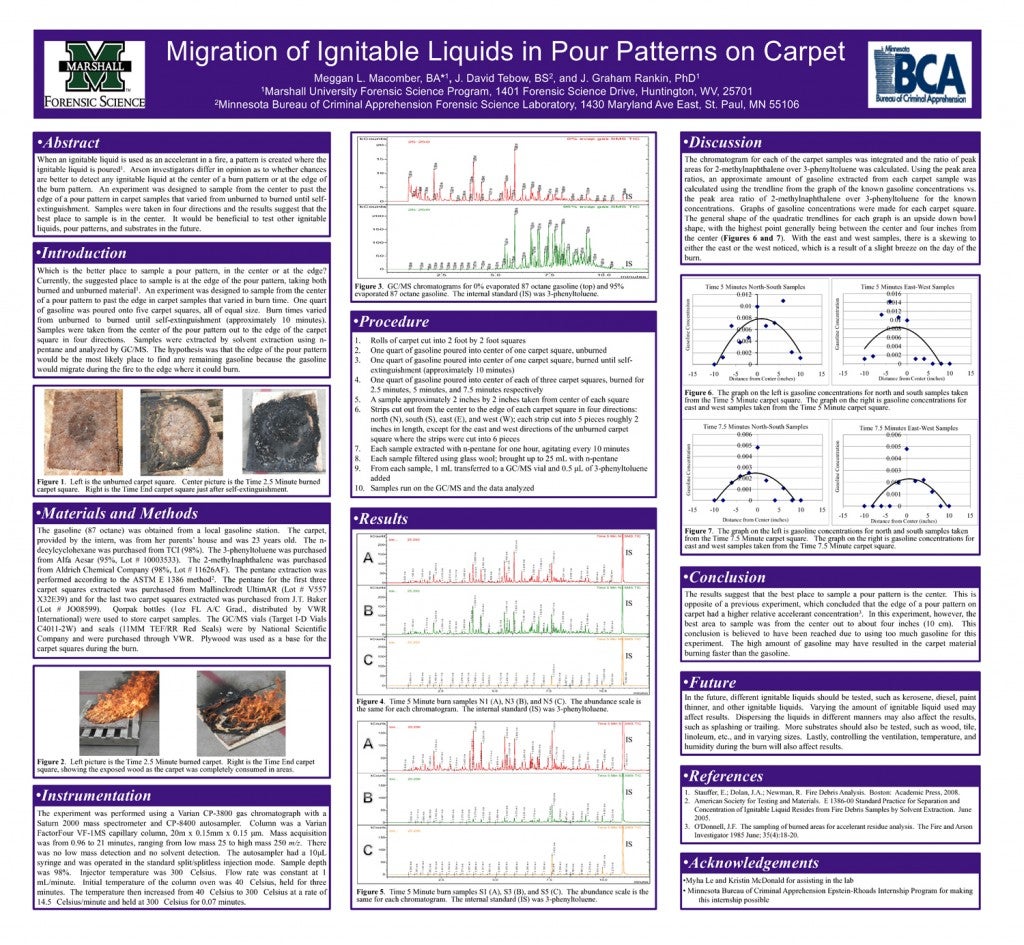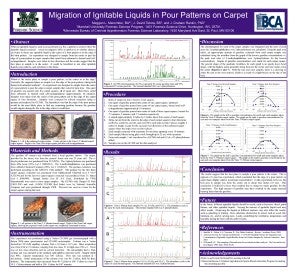
The Migration of Ignitable Liquids in Pour Patterns on Carpet
Biography:
Meggan Macomber is from the small town of Caledonia, MN. She earned her Bachelor’s degree in Chemistry from Cornell College in Iowa in 2009. She is currently pursuing her Master’s degree in Forensic Science, with emphases in Forensic Chemistry and Digital Forensics. Meggan completed her internship with the Minnesota Bureau of Criminal Apprehension Forensic Science Laboratory in St. Paul, MN, working in the fire debris analysis lab.
Abstract:
When an ignitable liquid is used as an accelerant in a fire, a pattern is created where the ignitable liquid is poured. Arson investigators differ in opinion as to whether chances are better to detect any ignitable liquid residue at the center of a pour pattern or at the edge of the pour pattern where the fire is actually burning. In order to test the theories of edge versus center sampling, an experiment was designed to sample from the center to past the edge of a pour pattern in carpet samples that varied from unburned to burned until self-extinguishment. One quart of gasoline was poured on each of five two-foot by two-foot squares of carpet prior to burning. Samples were taken in four directions and extracted with n-pentane for analysis by GC/MS.
The peak area of 2-methylnaphthalene, a compound found in gasoline, was compared with the peak area of 3-phenyltoluene as an internal standard in order to find the ratio between the two. The ratios were then compared to ratios of 2-methylnapthalene/3-phenyltoluene for known concentrations of neat gasoline in order to approximate the amount of gasoline in that sample. The trendlines for each of the carpet squares suggest that the best place to sample is from the center out to approximately 10 cm (4 in).
Poster:
References:
- Stauffer, E.; Dolan, J.A.; Newman, R. Fire Debris Analysis. Boston: Academic Press, 2008.
- American Society for Testing and Materials. E 1386-00 Standard Practice for Separation and Concentration of Ignitable Liquid Resides from Fire Debris Samples by Solvent Extraction. June 2005.
- O’Donnell, J.F. The sampling of burned areas for accelerant residue analysis. The Fire and Arson Investigator 1985 June; 35(4):18-20.
